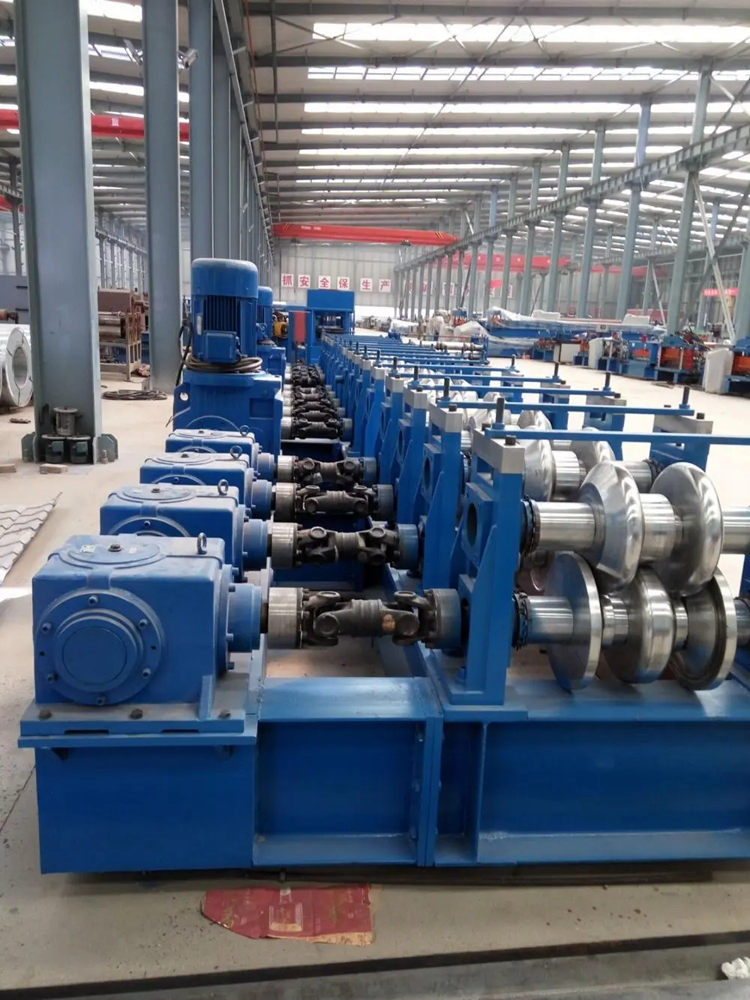
Understanding Suspended Ceiling T Grid Forming Machines
In modern construction and architectural design, the ceiling plays an integral role in both aesthetics and functionality. Among various ceiling systems, suspended ceilings have gained immense popularity due to their versatility, ease of installation, and cost-effectiveness. A crucial component in the creation of suspended ceilings is the T grid system, which not only supports the ceiling panels but also creates a clean and visually appealing finish. To efficiently produce these T grids, manufacturers rely on advanced equipment known as suspended ceiling T grid forming machines.
What is a Suspended Ceiling T Grid Forming Machine?
A suspended ceiling T grid forming machine is specialized machinery designed to manufacture the T-shaped metal grids required for suspended ceiling systems. These machines are capable of transforming raw metal coils into precisely shaped grid components that will support ceiling tiles or panels. The T grid, typically made from galvanized steel or aluminum, is designed to be both lightweight and durable, providing the necessary structural support while maintaining an aesthetically pleasing appearance.
Components of the T Grid Forming Machine
A typical T grid forming machine consists of several key components that work in unison to create the desired shapes
1. Uncoiler This component holds the metal coil that serves as the raw material for the T grids. The uncoiler feeds the coil into the machine for processing.
2. Roll Forming System This is the core of the machine, where the metal is gradually shaped through a series of rollers. The rollers are designed to bend, form, and contour the metal into the T grid profile.
3. cutting Mechanism Once the T grid reaches the desired length, the cutting mechanism accurately cuts it to size. This precision is essential to ensure that the grids fit perfectly during installation.
4. Stacking System After cutting, the formed grids are stacked neatly for easy handling and transportation. The stacking system can vary, with some machines incorporating automatic stacking features to enhance efficiency.
Advantages of Using T Grid Forming Machines

1. High Efficiency These machines can produce T grids at a rapid pace, significantly reducing manufacturing times compared to traditional methods. This high throughput is crucial in meeting the demands of large construction projects.
2. Precision With advanced computer control systems, modern T grid forming machines can achieve high levels of precision in both shaping the metal and cutting it to size. This consistency is crucial for ensuring quality in installation.
3. Flexibility Many T grid forming machines can be adjusted to produce various designs and sizes of grids, allowing manufacturers to cater to different client specifications without needing multiple machines.
4. Cost-Effectiveness By automating the manufacturing process, companies can reduce labor costs and minimize material wastage, leading to substantial savings over time.
5. Quality Control The integration of technology allows for continuous monitoring of the production process, ensuring that any defects can be quickly identified and addressed. This results in high-quality end products that are ready for installation.
The Role of Technology in T Grid Production
Recent advancements in technology have transformed the way T grids are manufactured. The incorporation of computer numerical control (CNC) and automation technology allows for more complex designs and increased production flexibility. Operators can easily program the machine to create different profiles, making it easier to respond to varying market demands.
Another significant technological advancement is the integration of Industry 4.0 elements, which enables real-time monitoring and data analysis of the production process. This not only improves efficiency but also enhances decision-making processes within manufacturing.
Conclusion
Suspended ceiling T grid forming machines are essential tools in the construction industry, playing a pivotal role in the production of suspended ceiling systems. Their efficiency, precision, and flexibility provide manufacturers with the ability to meet the growing demand for quality ceiling solutions. As technology continues to evolve, these machines will likely incorporate even more advanced features, further streamlining the production process and enhancing the overall quality of suspended ceilings. In a world where aesthetics and functionality clash, the efficient production of T grids ensures that architects and builders can deliver exceptional spaces that meet the needs of modern society.